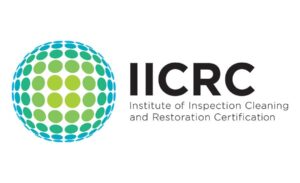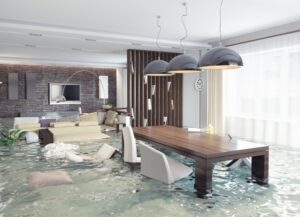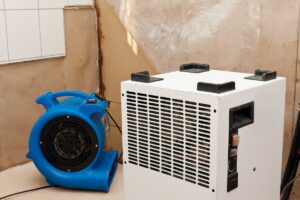What Is a Sewer Backup and Why Does it Happen?
Sewage backups are among the most dangerous and disruptive problems a homeowner can face. When wastewater flows back into your home, it can bring foul odors, costly property damage, and serious health risks. Whether caused by heavy rainfall, tree root intrusion, or aging pipes, a sewer backup demands fast, safe, and professional action.
This guide explains exactly what to do when your sewer backs up, how to protect your home, and when to contact a trusted team for sewage damage cleanup.
What You Need to Know About Sewer Backups in Homes
Sewer backups occur when wastewater cannot flow away from your home due to blockages, system overloads, or structural damage. Instead of draining normally, sewage may back up into your sinks, toilets, or basement drains. This poses both immediate and long-term threats to your health and property.
Let’s look at the most common causes, warning signs, and dangers of a sewage backup in the house.
Causes of Sewer Backups
Several factors can cause or contribute to a sewer backup:
- Clogs: Buildup from grease, food waste, hair, or paper products can block your pipes, preventing proper drainage.
- Tree root infiltration: Roots seek moisture and can grow into or around sewer lines, eventually causing cracks or total blockages.
- Aging sewer systems: Older Seattle homes often have outdated pipes that corrode, collapse, or become overwhelmed during storms.
- Broken or cracked pipes: Shifting soil or nearby construction can damage underground lines.
- Heavy rainfall: Storm sewers can overflow during extreme weather, causing backups into residential systems.
- Structural damage: Misaligned joints or sagging sections in your pipes can interrupt proper flow.
Signs Your Sewer Line is Backing Up
Catch the warning signs early to prevent a full-blown basement emergency:
- Foul odors coming from drains or your yard
- Multiple drains clogging at the same time
- Gurgling sounds from toilets, tubs, or sinks
- Water backing up in basement, especially around floor drains
- Soggy spots or overly lush grass patches in the yard (a sign of underground leakage)
If you notice more than one of these issues at once, you may already be facing a sewage backup emergency. Be sure to contact PureDry for 24/7 sewer backup restoration.
The Dangers of Sewer Backups
Ignoring or delaying your response to a sewer backup can lead to:
- Health hazards from exposure to bacteria, viruses, and toxic gases
- Structural damage to floors, drywall, and foundation systems
- Mold and mildew growth within 24-48 hours of exposure
- Electrical hazards from contact between moisture and wiring
These dangers are why immediate cleanup and emergency restoration are critical when dealing with a sewage backup in the basement.
You can avoid the need for sewer backup restoration altogether if you know the right steps to take to prevent a sewage backup. Check out the infographic below for simple steps you can take to avoid costly sewer backup restoration.
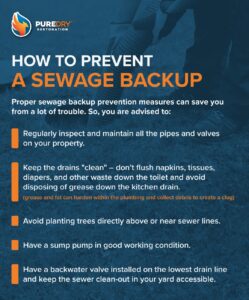
What to Do Immediately After a Sewage Backup
Once you’ve discovered a sewage backup on your property, you must act quickly to minimize the damage and protect your health.
Here’s what you should do right away:
- Avoid contact with contaminated water. Assume that any standing water or sewage contains harmful bacteria and viruses.
- Shut off electrical power to affected areas if it’s safe to do so. Never walk through standing water near outlets or appliances.
- Stop all water usage in your home to prevent additional flow into the system (toilets, sinks, laundry machines).
- Evacuate people and pets from the affected space.
Sewage issues can escalate fast, especially in rainy regions like Seattle. If you’re unsure what caused the backup or how bad it is, call in the pros immediately. An emergency water damage restoration specialist like PureDry will assess the problem and begin safe sewage damage cleanup.
How to Respond to an Emergency Sewer Backup in Your Basement
For most homeowners, cleaning up a sewer backup in the basement is not a DIY job. Here’s a structured approach to ensure everything is handled safely and completely.
1. Secure the Basement
Before entering, assess safety risks:
- Check for electrical hazards. Do not enter if outlets or cords are underwater.
- Wear proper protective gear (rubber boots, gloves, N95 mask).
- Open windows and doors to ventilate the area.
Avoid cross-contaminating clean areas. If you must go in, use plastic sheeting to block off the basement entrance.
2. Remove Standing Water
Removing contaminated water quickly is essential to limit damage and reduce mold risk.
- Use sump pumps (if installed) or wet/dry vacuums rated for sewage.
- For large backups, hire a professional team with commercial extraction equipment, like PureDry.
PureDry’s flood damage restoration team will help with water extraction, sanitization, and other essential services.
3. Salvage or Dispose of Contaminated Items
Unfortunately, not everything can be saved after a sewage backup. Porous items like carpets, insulation, cardboard boxes, and upholstered furniture should be discarded if they’ve been soaked.
Bag salvageable items in heavy-duty plastic and label them clearly for restoration professionals. For help with high-value or sentimental belongings, explore PureDry’s contents restoration services.
4. Clean and Disinfect
Every surface exposed to sewage needs thorough cleaning with EPA-certified disinfectants. This includes:
- Floors and walls
- Pipes and drains
- Non-porous furniture
Avoid using bleach on porous surfaces, as it doesn’t penetrate deeply enough to kill pathogens. Never attempt to clean up the mess yourself if black water (also known as Category 3 water) is present. Instead, call the certified sewage cleanup professionals at PureDry.
5. Dry and Dehumidify
The next step after removing all water and contaminated debris is drying the space completely. Lingering moisture creates an ideal environment for mold and mildew, particularly in basements where airflow is restricted.
Drying tips:
- Use high-capacity dehumidifiers and industrial air movers.
- Keep windows open when weather allows to improve ventilation.
- Pull up any flooring or baseboards that were exposed to water.
PureDry’s certified water damage technicians perform all these services and more. We use advanced moisture detection tools to confirm all areas are truly dry—not just their surfaces.
6. Remove Odors
Sewer backups often leave behind strong, lingering odors due to the presence of bacteria and other biological contaminants.
PureDry’s professional deodorization methods include:
- Preparing ozone or hydroxyl treatments to neutralize airborne particles
- Using EPA air scrubbers to clean circulating air
- Sealing porous materials that absorbed odors
DIY air fresheners and surface cleaners won’t cut it for sewage odors. Trust our odor removal services to fully eliminate the problem at its source.
7. Repairs
Once the area is clean and dry, you’ll need to address any damage to walls, flooring, plumbing, or electrical systems. Common repairs during sewer backup restoration may include:
- Replacing drywall or paneling
- Installing new flooring
- Repairing damaged sewer lines
- Repainting affected rooms
All materials exposed to black water should be removed and replaced with new ones. If mold has developed, pair this step with professional mold removal.
8. Final Inspection
Before declaring your home safe again, schedule a final walkthrough with professionals like PureDry who understand health regulations and insurance documentation. Our restoration experts will:
- Test moisture and air quality levels
- Confirm structural safety and electrical function
- Help you prepare insurance claim documentation
- Ensure all affected areas meet sanitation standards
Our IICRC-certified technicians ensure your cleanup meets national standards and avoids future liability concerns. PureDry proudly follows all IICRC protocols to deliver sewage backup cleanup you can be confident in.
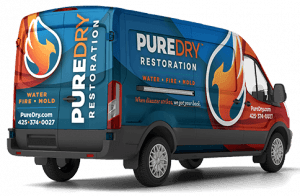
Need Help with a Basement Sewer Backup in Seattle? We’re On Call 24/7
Cleaning a sewer backup in your basement is stressful and potentially dangerous. Whether your backup is caused by tree roots in your sewer line, a city-wide storm sewer surge, or an aging drainage system, professional restoration services can be the difference between minor issues and major losses.
PureDry Restoration provides full-service sewage damage cleanup and sewer backup restoration across Seattle, WA and surrounding communities, including:
Our technicians adhere to IICRC standards and are equipped with advanced drying, disinfection, and air purification tools. We don’t just clean up—we restore your peace of mind.
Don’t wait for sewage damage to worsen. If you’ve experienced a sewage backup in your house, call PureDry now for immediate 24/7 help.

